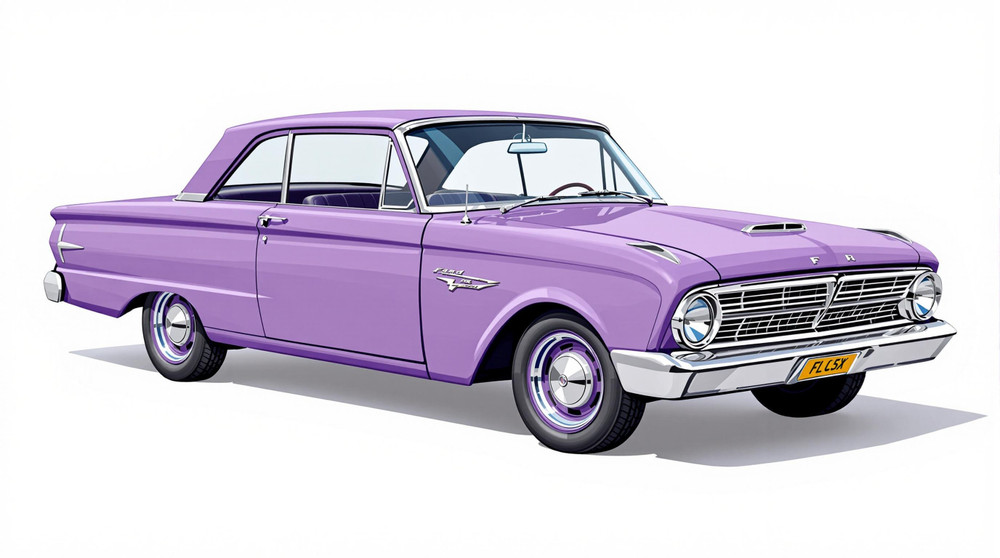Image of 1961 Ford Falcon, Note: These illustrations use artistic license and may differ from actual historical models.
Performance Metrics
Fundamental Metrics
Emotional Appeal
MMP Rating
| Engine Specifications | |
|---|---|
| Engine: | Inline 6 |
| Displacement: | 144 cu in (2.4 L) |
| Horsepower: | 85 hp |
| Torque: | 134 lb-ft |
| Compression Ratio: | 8.7:1 |
| Ignition System: | Conventional points ignition system |
| Cooling System: | Liquid cooled |
| Performance Specifications | |
| 0-60 Time: | 14.3 seconds |
| 1/4 Mile Time: | 19.6 seconds |
| Top Speed: | 90 mph |
| Transmission and Drive | |
| Drive Type: | Rear-wheel drive |
| Transmission Type: | 3-speed manual, 2-speed Fordomatic automatic |
| Fuel and Efficiency | |
| Fuel System Type: | Carburetor |
| MPG: | 20-25 mpg |
| Dimensions and Brakes | |
| Brakes: | Drum brakes |
| Wheelbase: | 109.5 inches |
| Weight: | 2,400 lbs |
Note: Specifications for classic cars are given to the best of our ability, considering the limited and variant data available.
The 1961 Ford Falcon: An Emblem of Simplicity and Efficiency
The 1961 Ford Falcon emerged as a beacon of practicality during an era when extravagance often ruled the automotive world. This compact sedan, crafted by the Ford Motor Company, was designed to meet the needs of post-war America, offering affordability and efficiency. As an answer to the growing demand for economical family cars, the Falcon soared into popularity, becoming a symbol of American ingenuity and a testament to Ford's ability to adapt to market trends. A notable moment in its history was when the Falcon's platform became the basis for the legendary Ford Mustang, which debuted in 1964.
Design and Innovation
With its unassuming yet charming exterior, the 1961 Falcon featured clean lines and a modest grille that exuded understated elegance. The car's design was a departure from the fins and chrome that dominated the previous decade, signaling a new direction for American car design. Inside, the Falcon offered a no-frills interior with durable materials meant to withstand daily use. Despite its simplicity, it boasted innovative features for its time, such as an optional Fordomatic automatic transmission and a "Mileage Maker" inline-six engine. Color options ranged from Corinthian White to Monte Carlo Red, with Rangoon Red and Colonial White being particularly popular among buyers. The Falcon came in several body styles including two-door and four-door sedans, a two-door wagon, and even a Ranchero pickup variant. However, it was the four-door sedan that captured the hearts of many American families.
Historical Significance
The Falcon's impact on automotive design was profound; it championed the compact car segment in the United States at a time when bigger was often considered better. Its success paved the way for other manufacturers to introduce smaller, more fuel-efficient models. The Falcon's legacy is also tied to its role as the progenitor of the Mustang's platform – an influence that would shape automotive culture for generations.
Performance and Handling
Performance-wise, while not designed as a powerhouse, the 1961 Falcon's inline-six engine provided adequate pep for everyday driving, with top speeds hovering around 90 mph and acceleration from 0-60 mph in about 19 seconds. Handling was respectable for its class; it managed bumps with poise and maintained composure on windy roads. Drivers enjoyed a smooth ride quality and an engine sound that was more reassuring hum than aggressive roar.
Ownership Experience
The Falcon served many roles from a dependable daily driver to an occasional show car. It wasn't uncommon to see Falcons modified for drag racing either. Owners appreciated its simplicity which translated into low maintenance costs and ease of repair. The straightforward mechanicals made it an ideal car for DIY enthusiasts.
Fun Facts
Among some of its unique trivia, certain Falcons were equipped with dealer-installed air conditioning – a rarity at the time. While not known for setting speed records, it did set sales records for Ford upon release. Criticisms typically focused on its modest power output and basic amenities but were offset by its reliability and economy.
Collector's Information
Today, collectors find value in the Falcon's simplicity and historical significance. While exact production numbers are hard to pin down, it is estimated that hundreds of thousands were produced in various configurations. Values range significantly based on condition and originality but generally fall between $5,000 for a project car to over $25,000 for pristine examples or rare body styles like convertibles or wagons. Price trends have shown appreciation over time as nostalgia for this era of automobiles grows among collectors.
Conclusion
The 1961 Ford Falcon stands as an enduring icon of American automotive history – a testament to practical design and economic sensibility in an age where excess often prevailed. Its contribution to future models like the Mustang cements its place in automotive lore. For those who appreciate classic cars with character and historical relevance, the Falcon remains an attractive proposition.
1961 Ford Falcon Catalog of Parts
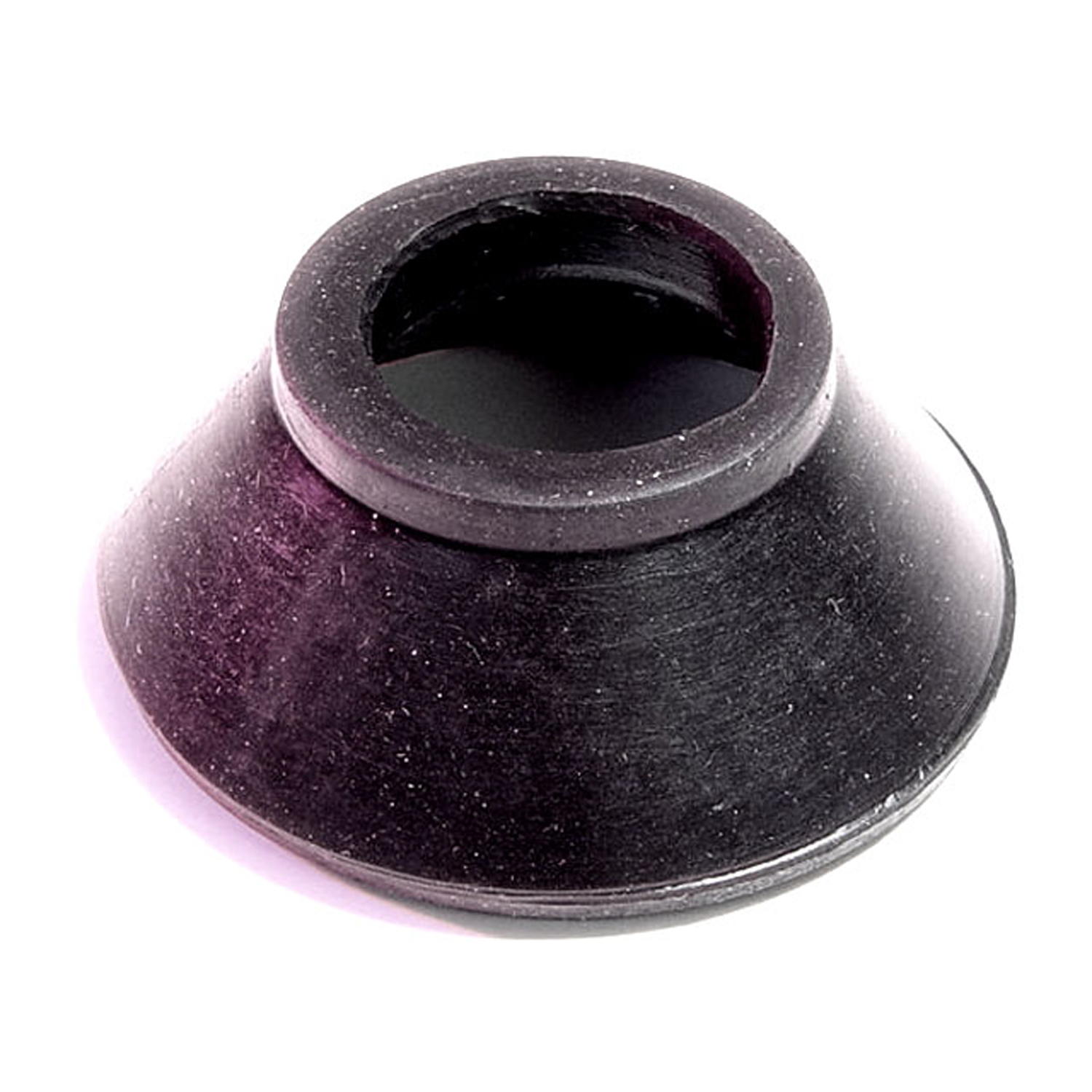 1961 Ford Falcon Suspension Ball Joint Dust Seal. 3/4" top I.D-BN 101-BSuspension Ball Joint Dust Seal. 3/4" top I.D., 1-11/16" bottom O.D., 3/4" high. For some rare models. Check dimensions against original. Each
1961 Ford Falcon Suspension Ball Joint Dust Seal. 3/4" top I.D-BN 101-BSuspension Ball Joint Dust Seal. 3/4" top I.D., 1-11/16" bottom O.D., 3/4" high. For some rare models. Check dimensions against original. Each 1961 Ford Falcon Power Steering Stop Insulator. Die stamped. 1-7/16" O.D-BN 107-APower Steering Stop Insulator. Die stamped. 1-7/16" O.D., 1-1/16" I.D., .808 thick. Each
1961 Ford Falcon Power Steering Stop Insulator. Die stamped. 1-7/16" O.D-BN 107-APower Steering Stop Insulator. Die stamped. 1-7/16" O.D., 1-1/16" I.D., .808 thick. Each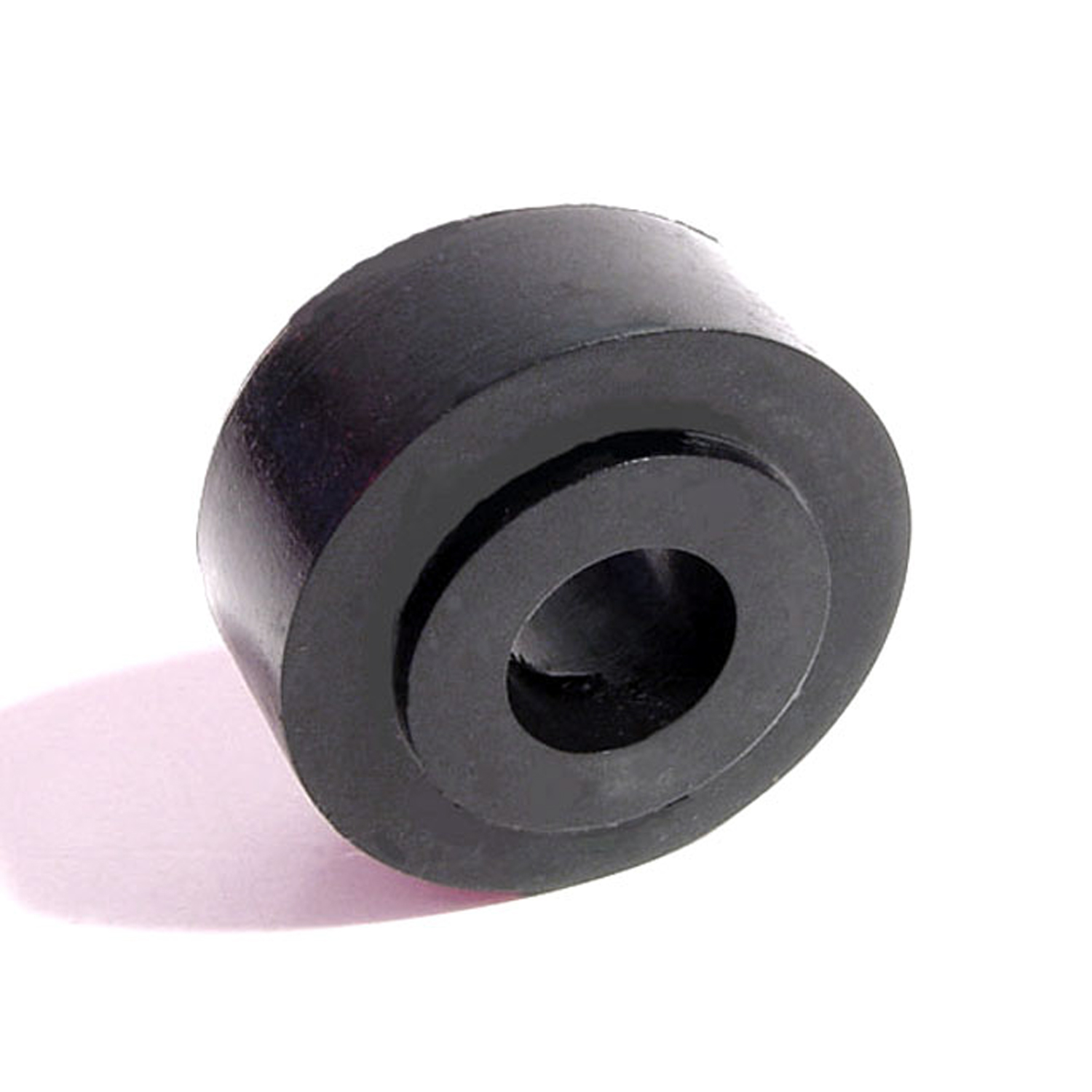 1961 Ford Falcon Shock Absorber Grommet. 1-1/4" bottom O.D., 1" high-BN 12Shock Absorber Grommet. 1-1/4" bottom O.D., 1" high., with 3/4" I.D. Each
1961 Ford Falcon Shock Absorber Grommet. 1-1/4" bottom O.D., 1" high-BN 12Shock Absorber Grommet. 1-1/4" bottom O.D., 1" high., with 3/4" I.D. Each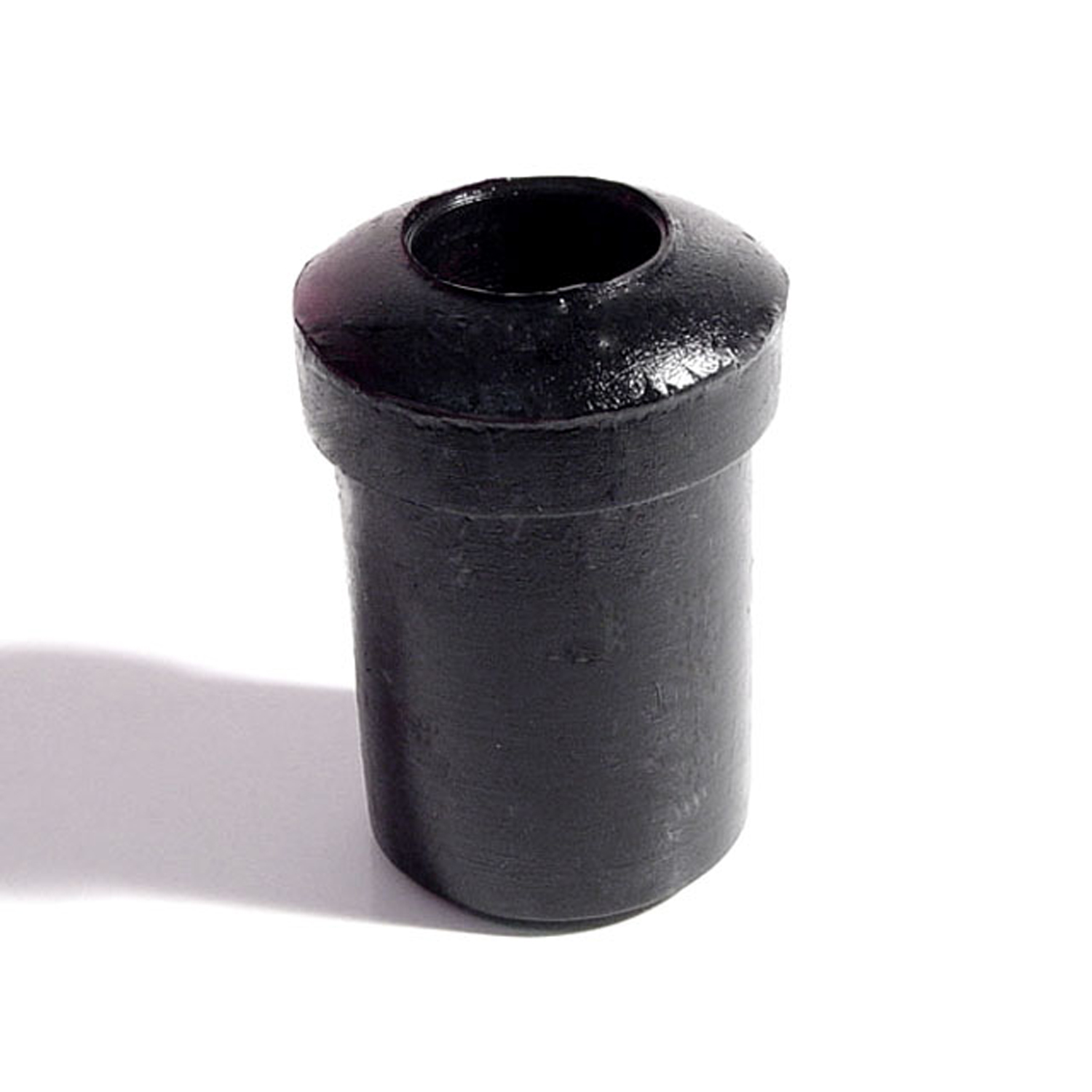 1961 Ford Falcon Spring and Shackle Bushing. 1" bottom O.D-BN 20Spring and Shackle Bushing. 1" bottom O.D. X 1-5/8" high, with 9/16" I.D. Each
1961 Ford Falcon Spring and Shackle Bushing. 1" bottom O.D-BN 20Spring and Shackle Bushing. 1" bottom O.D. X 1-5/8" high, with 9/16" I.D. Each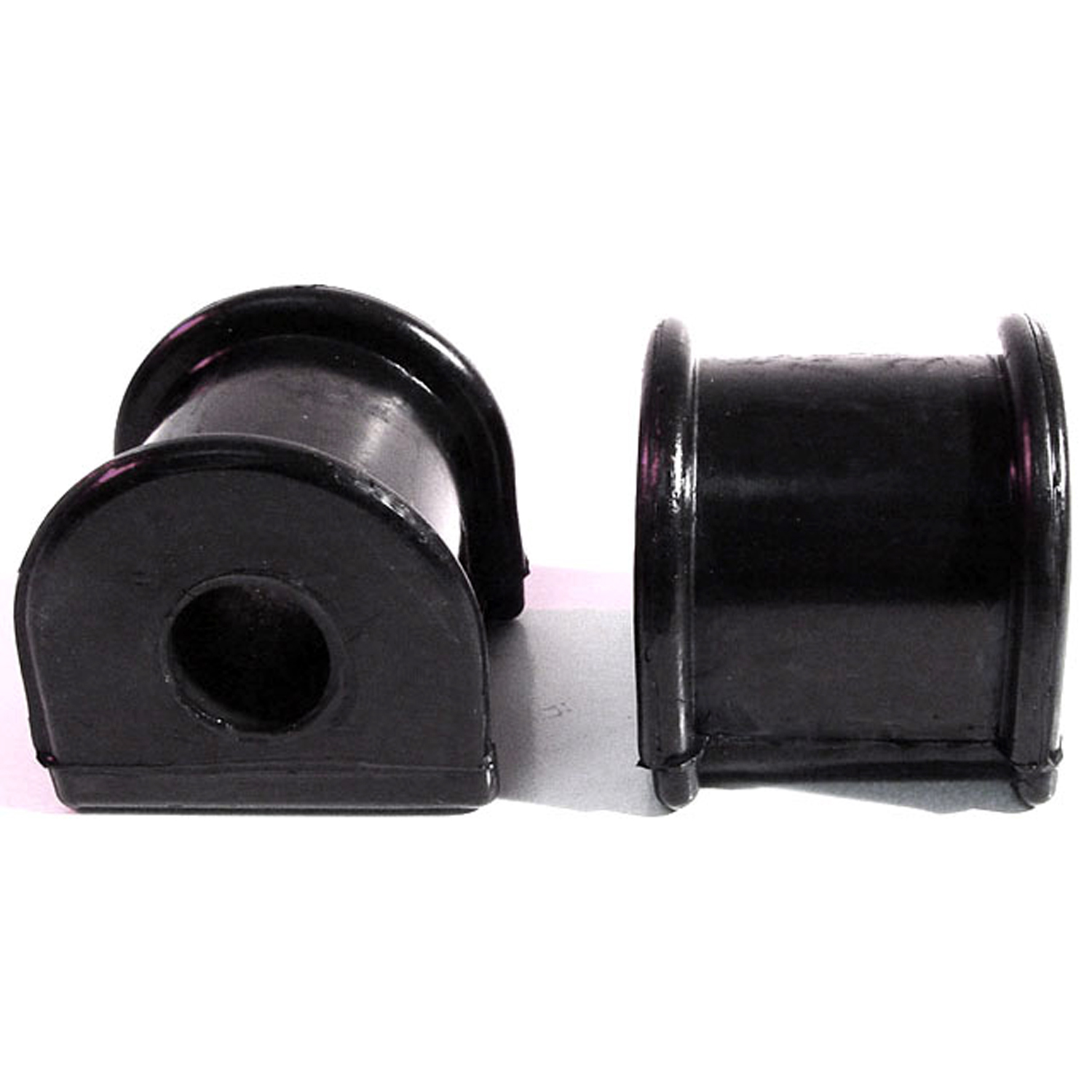 1961 Ford Falcon Front Stabilizer Bar Bushings. Made of hard rubber-BN 32-BFront Stabilizer Bar Bushings. Made of hard rubber. 1-5/8" long X 1-7/8" wide X 1-5/8" high. Pair
1961 Ford Falcon Front Stabilizer Bar Bushings. Made of hard rubber-BN 32-BFront Stabilizer Bar Bushings. Made of hard rubber. 1-5/8" long X 1-7/8" wide X 1-5/8" high. Pair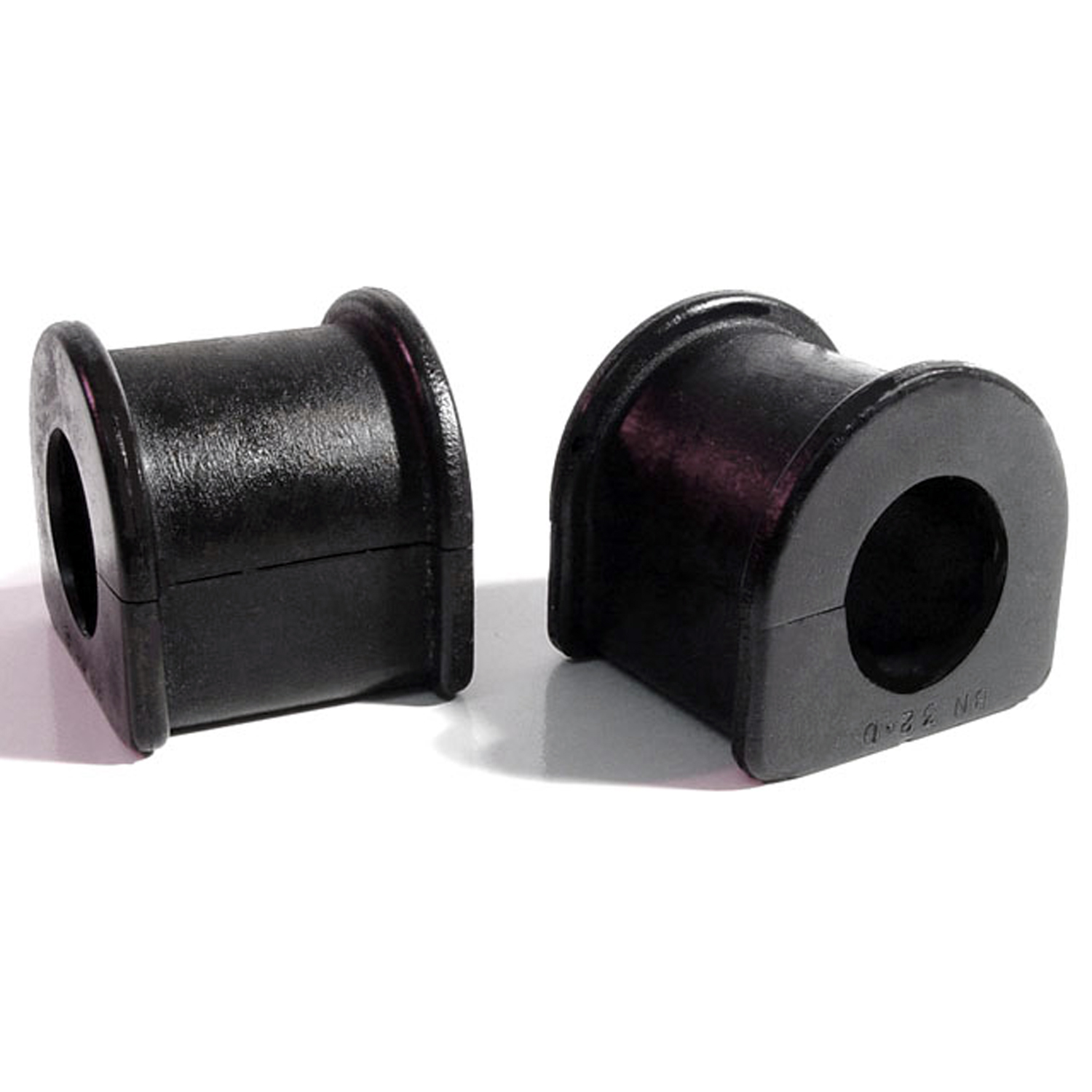 1961 Ford Falcon Stabilizer Bar Bushings-BN 32-DStabilizer Bar Bushings. 1-9/16" long X 1-1/2" wide X 1-5/8" high, 15/16" I.D. Pair
1961 Ford Falcon Stabilizer Bar Bushings-BN 32-DStabilizer Bar Bushings. 1-9/16" long X 1-1/2" wide X 1-5/8" high, 15/16" I.D. Pair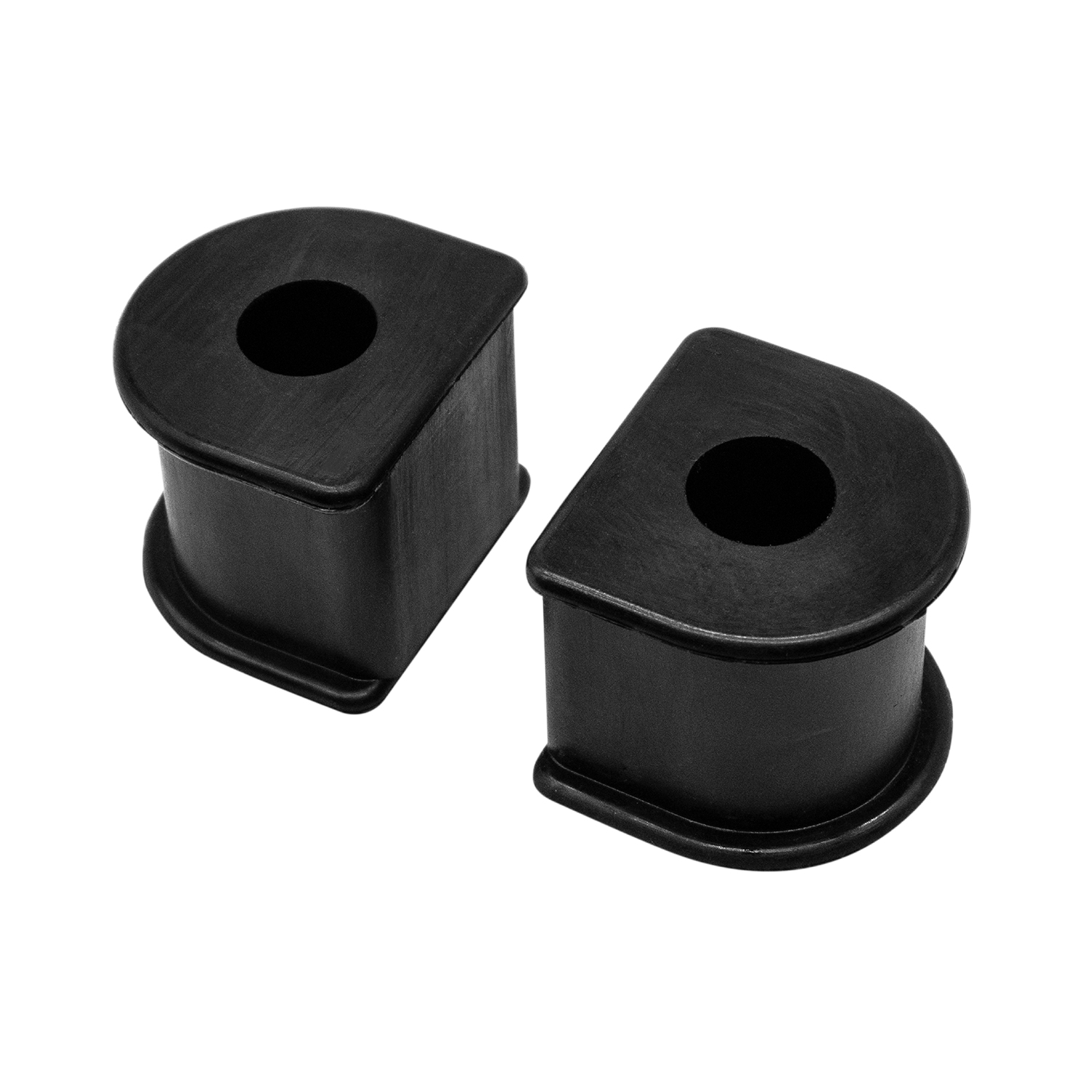 1961 Ford Falcon Front stabilizer bar to frame bushings-BN 32-FFront stabilizer bar to frame bushings, '59-'66 Ford and Mercury passenger car, station wagon and sedan delivery models, pair. Replaces OEM # B9A-5493-B.
1961 Ford Falcon Front stabilizer bar to frame bushings-BN 32-FFront stabilizer bar to frame bushings, '59-'66 Ford and Mercury passenger car, station wagon and sedan delivery models, pair. Replaces OEM # B9A-5493-B.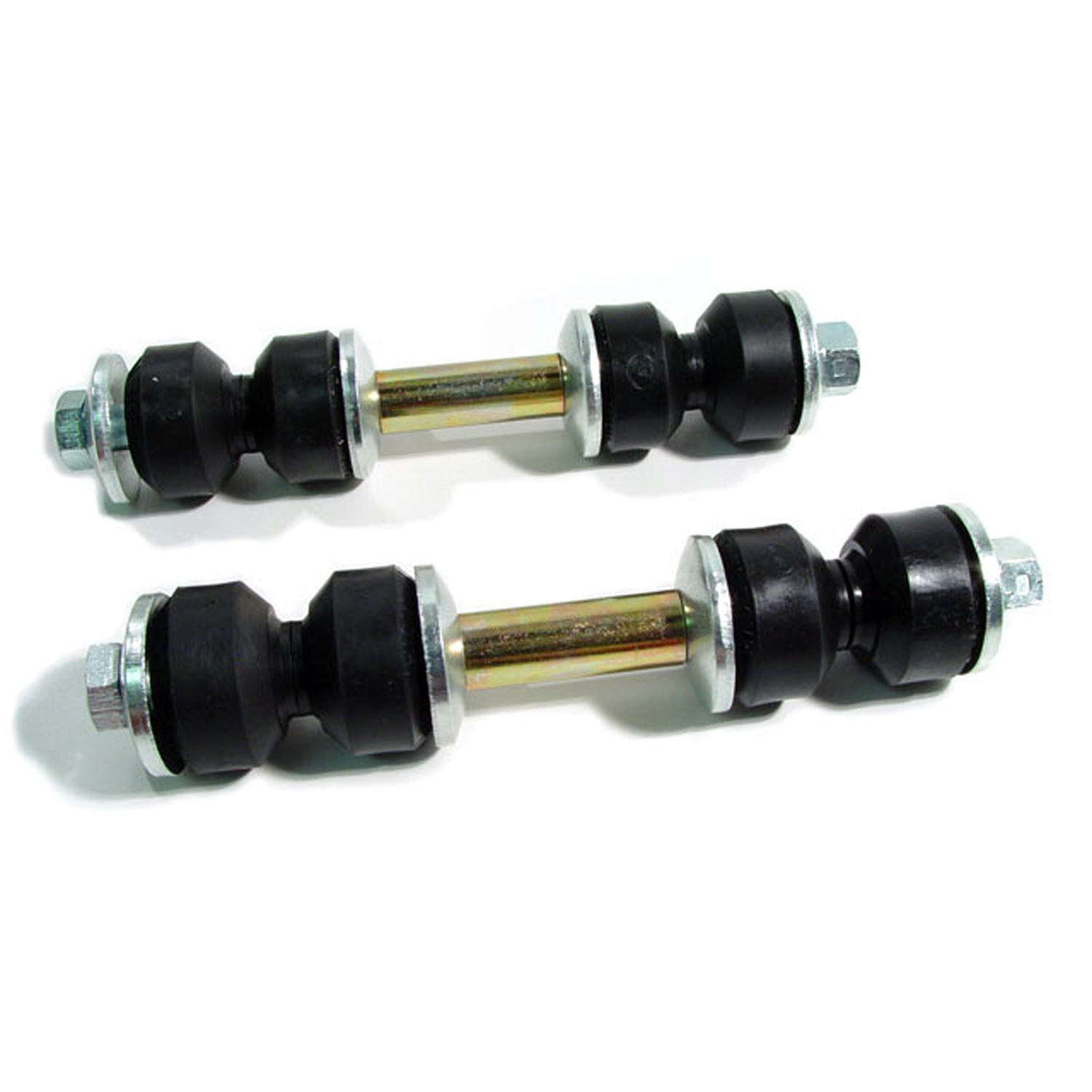 1961 Ford Falcon Front Stabilizer End Repair Kit-BNK 22Front Stabilizer End Repair Kit. 22-piece set for two stabilizer bars. Contains all rubber bushings, washers, bolts and nuts, enough for one front end. Set
1961 Ford Falcon Front Stabilizer End Repair Kit-BNK 22Front Stabilizer End Repair Kit. 22-piece set for two stabilizer bars. Contains all rubber bushings, washers, bolts and nuts, enough for one front end. Set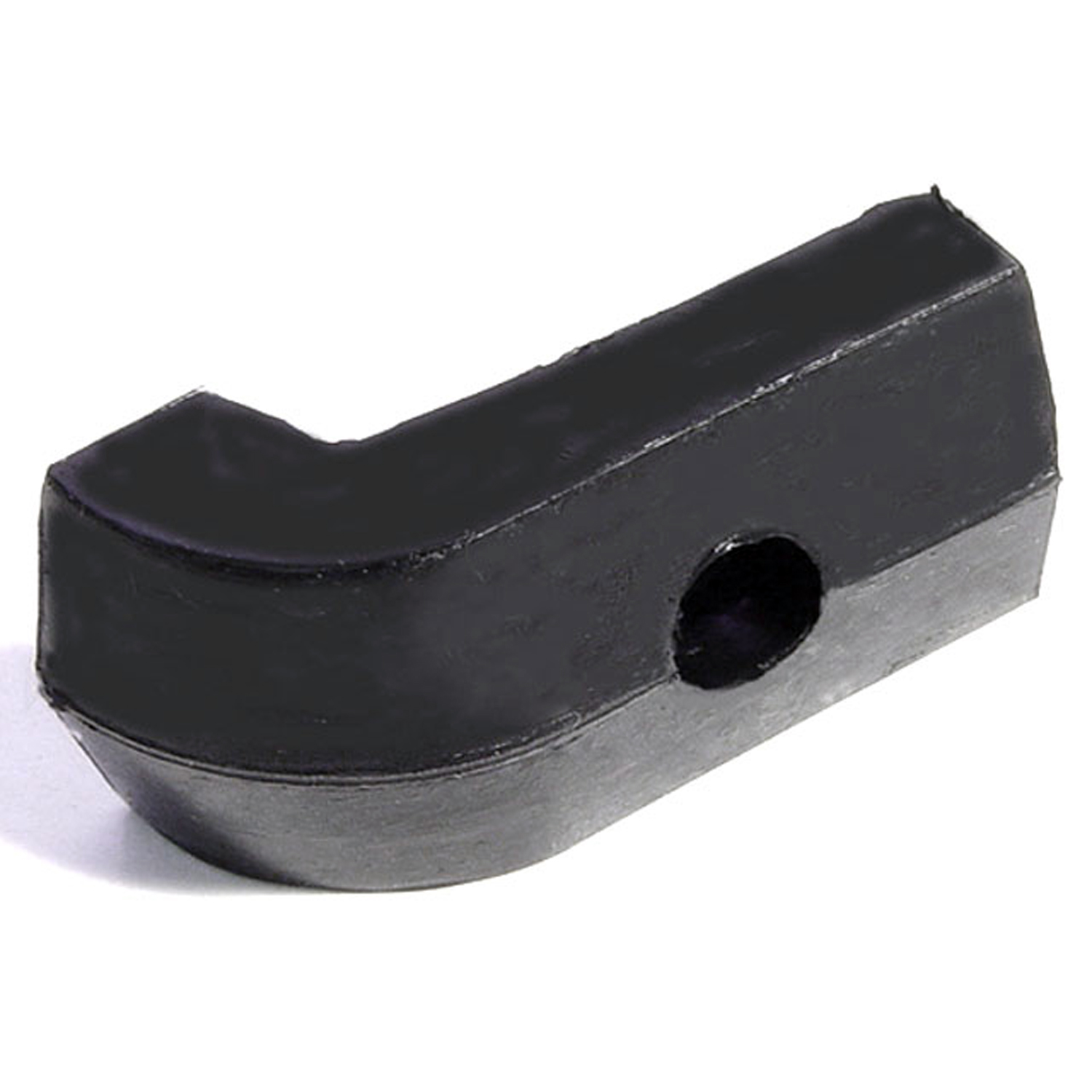 1961 Ford Falcon Hood Bumper. Made with steel core. Held by screw. Each-HF 40Hood Bumper. Made with steel core. Held by screw. Each
1961 Ford Falcon Hood Bumper. Made with steel core. Held by screw. Each-HF 40Hood Bumper. Made with steel core. Held by screw. Each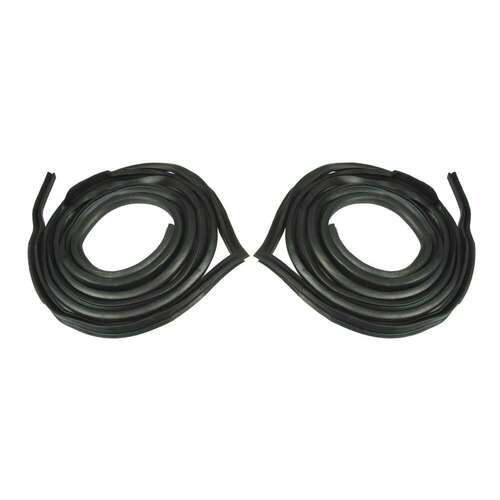 1961 Ford Falcon Door Weatherstrip Seal Kit fits 1960-1965 Ford Falcon & Ranchero 2 Door Sedan-LM 21-OThese door weatherstrips mount on the door with weatherstrip adhesive glue (not included). They fit the driver's and passenger door on the 2 door sedan/wagon models. It's made from high quality ozone resistant EPDM rubber.
1961 Ford Falcon Door Weatherstrip Seal Kit fits 1960-1965 Ford Falcon & Ranchero 2 Door Sedan-LM 21-OThese door weatherstrips mount on the door with weatherstrip adhesive glue (not included). They fit the driver's and passenger door on the 2 door sedan/wagon models. It's made from high quality ozone resistant EPDM rubber.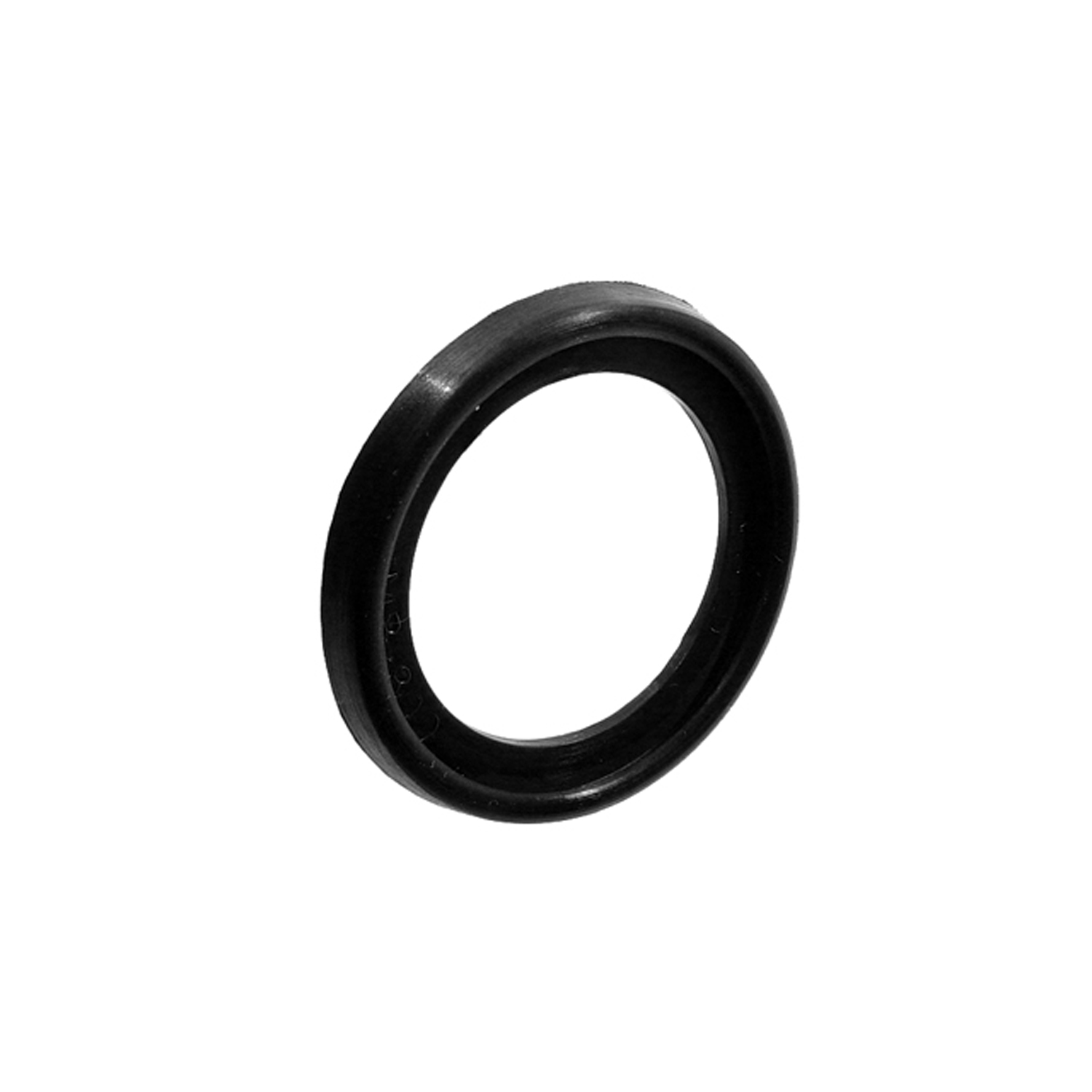 1961 Ford Falcon Antenna Base Mounting Pads 1-3/16" I.D., 1-11/16" O.D. Each-MB 800Antenna Base Mounting Pads 1-3/16" I.D., 1-11/16" O.D. Each
1961 Ford Falcon Antenna Base Mounting Pads 1-3/16" I.D., 1-11/16" O.D. Each-MB 800Antenna Base Mounting Pads 1-3/16" I.D., 1-11/16" O.D. Each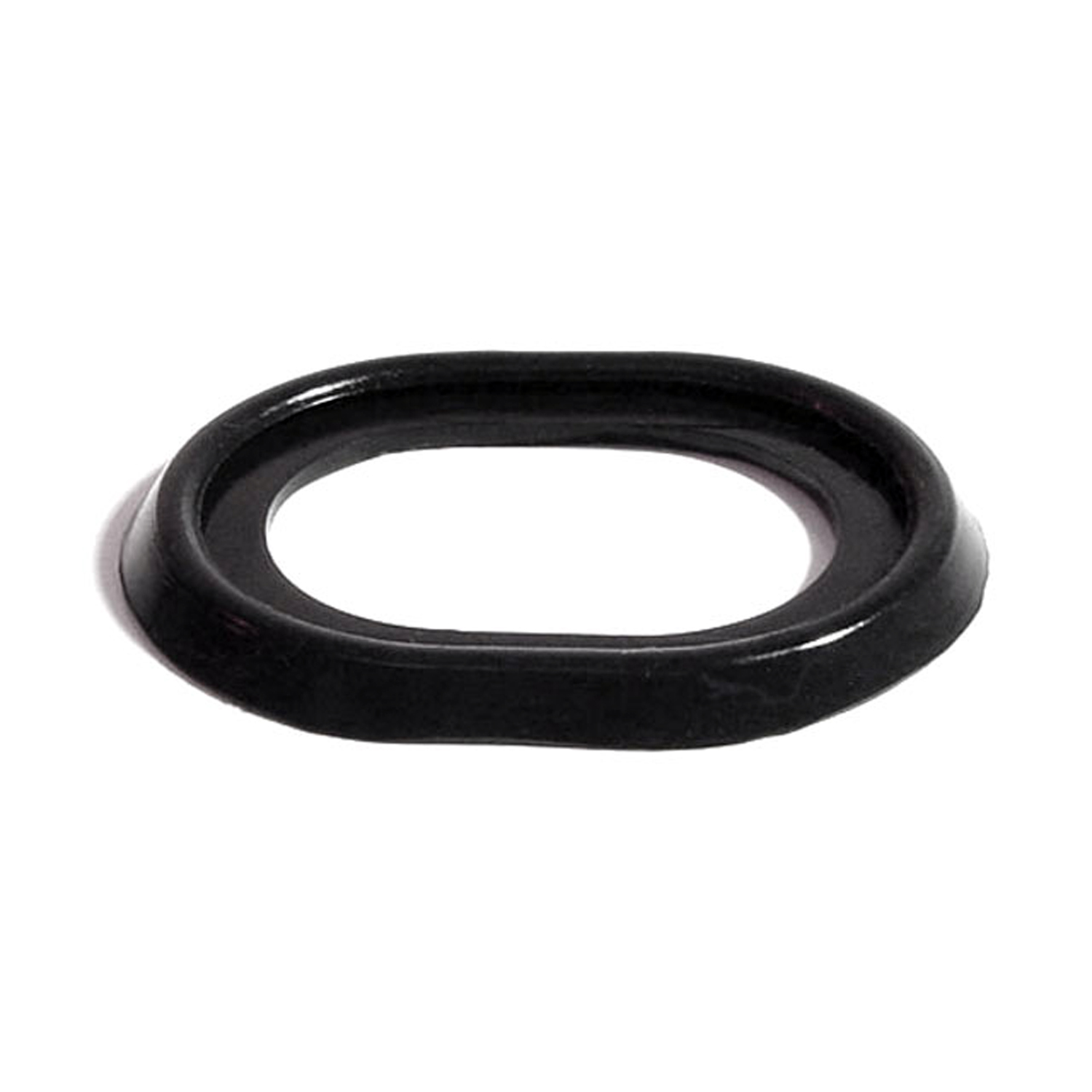 1961 Ford Falcon Antenna Base Pad. 1-5/8" wide X 2-1/8" long. Each-MP 800-GAntenna Base Pad. 1-5/8" wide X 2-1/8" long. Each
1961 Ford Falcon Antenna Base Pad. 1-5/8" wide X 2-1/8" long. Each-MP 800-GAntenna Base Pad. 1-5/8" wide X 2-1/8" long. Each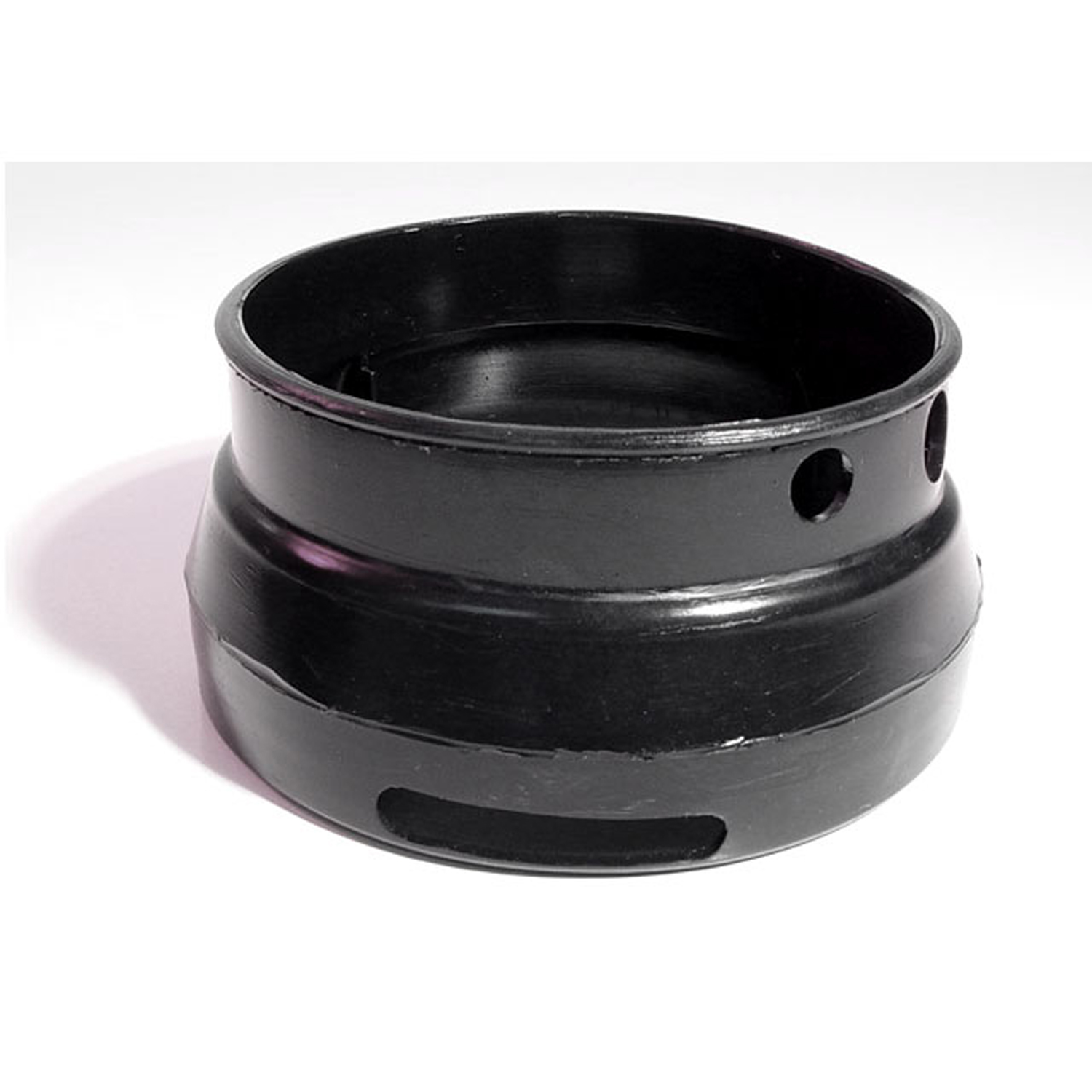 1961 Ford Falcon Generator Boot. Replaces OEM #C1AZ10170B-RP 2-FGenerator Boot. Replaces OEM #C1AZ10170B. Note: Notch may have to be cut by purchaser. Each
1961 Ford Falcon Generator Boot. Replaces OEM #C1AZ10170B-RP 2-FGenerator Boot. Replaces OEM #C1AZ10170B. Note: Notch may have to be cut by purchaser. Each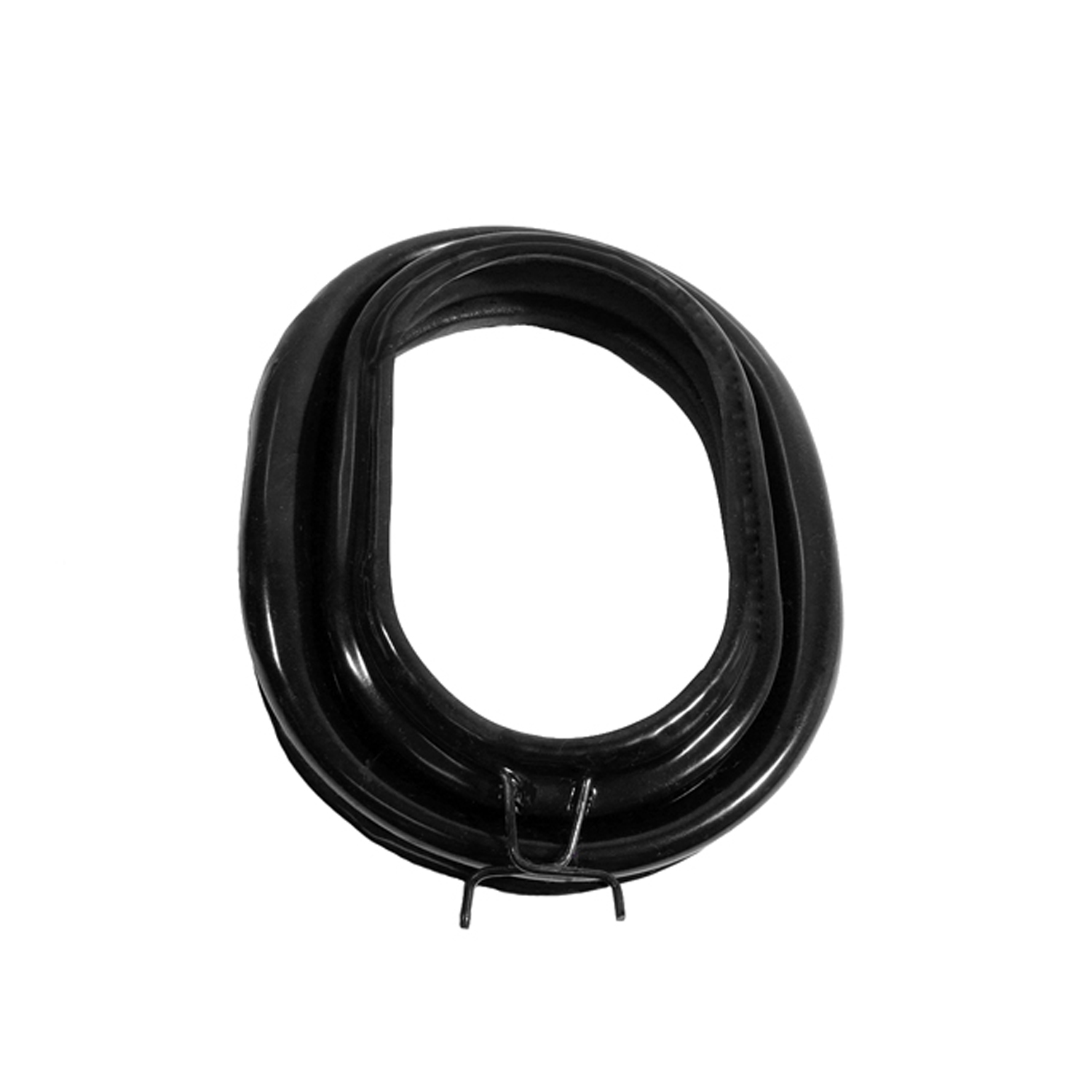 1961 Ford Falcon Inlet Box Bellows. Fresh air duct to heater-RP 300-HInlet Box Bellows. Fresh air duct to heater. Made of PVC with lower steel core and wire clamp. 7" wide X 9-1/4" long. Each
1961 Ford Falcon Inlet Box Bellows. Fresh air duct to heater-RP 300-HInlet Box Bellows. Fresh air duct to heater. Made of PVC with lower steel core and wire clamp. 7" wide X 9-1/4" long. Each 1961 Ford Falcon Brake Booster Boot. Each-RP 32-AABrake Booster Boot. Each
1961 Ford Falcon Brake Booster Boot. Each-RP 32-AABrake Booster Boot. Each 1961 Ford Falcon Hood Bumper. Snap-in wire base like original. Each-SB 89-AHood Bumper. Snap-in wire base like original. Each
1961 Ford Falcon Hood Bumper. Snap-in wire base like original. Each-SB 89-AHood Bumper. Snap-in wire base like original. Each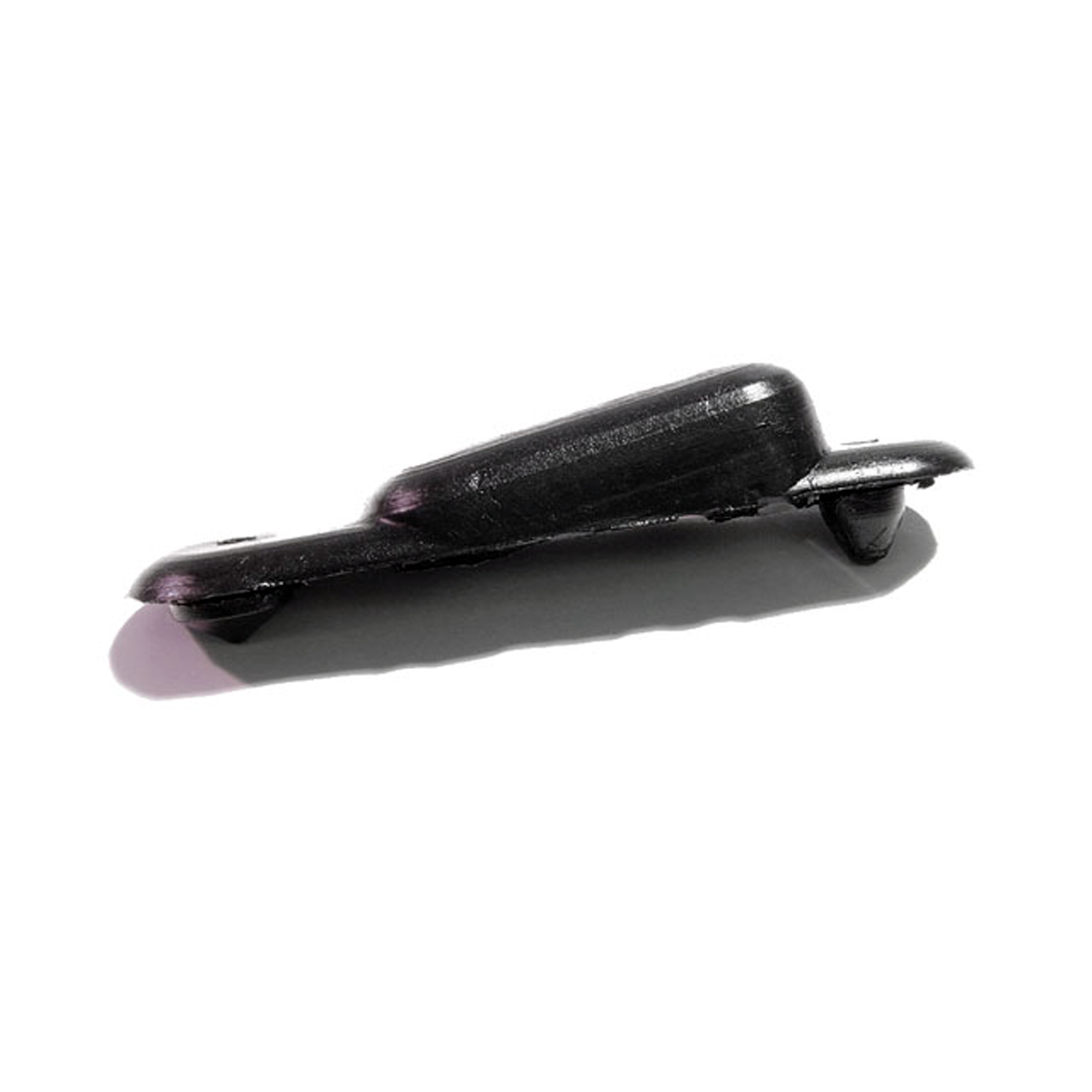 1961 Ford Falcon Rocker Panel Drain Plug Valve. Two used per car. Each-SM 64Rocker Panel Drain Plug Valve. Two used per car. Each
1961 Ford Falcon Rocker Panel Drain Plug Valve. Two used per car. Each-SM 64Rocker Panel Drain Plug Valve. Two used per car. Each 1961 Ford Falcon Trunk Seal, 14'1" long. Fits all models except Fastback-TK 51-A/14Trunk Seal, 14'1" long. Fits all models except Fastback. Each
1961 Ford Falcon Trunk Seal, 14'1" long. Fits all models except Fastback-TK 51-A/14Trunk Seal, 14'1" long. Fits all models except Fastback. Each 1961 Ford Falcon Trunk Seal. Each-TK 51-F/14Trunk Seal. Each
1961 Ford Falcon Trunk Seal. Each-TK 51-F/14Trunk Seal. Each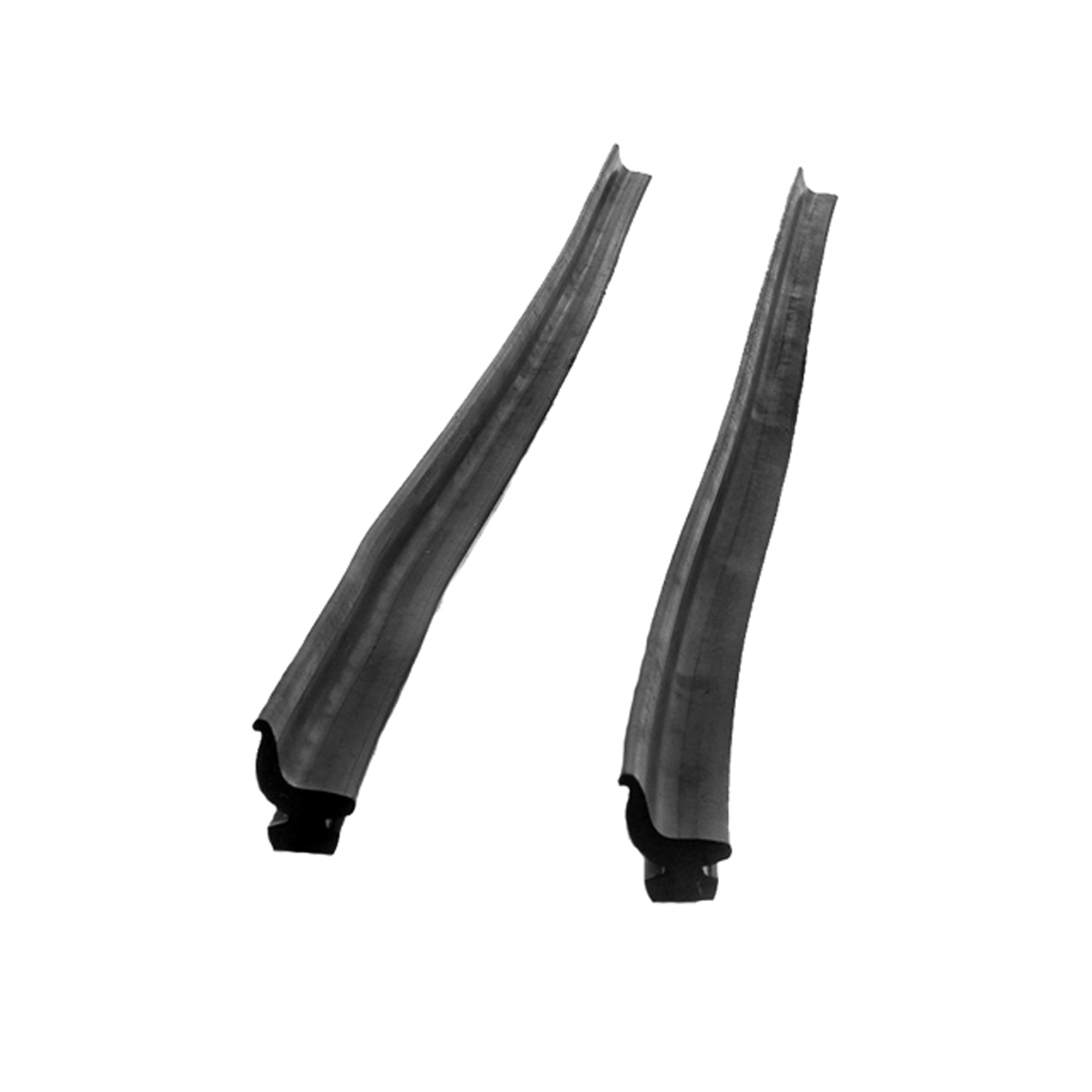 1961 Ford Falcon Rear roll-up Seal. Two 18" sections sliced into metal track-VS 4Rear roll-up Seal. Two 18" sections sliced into metal track. this foot with no steel insert. Pair
1961 Ford Falcon Rear roll-up Seal. Two 18" sections sliced into metal track-VS 4Rear roll-up Seal. Two 18" sections sliced into metal track. this foot with no steel insert. Pair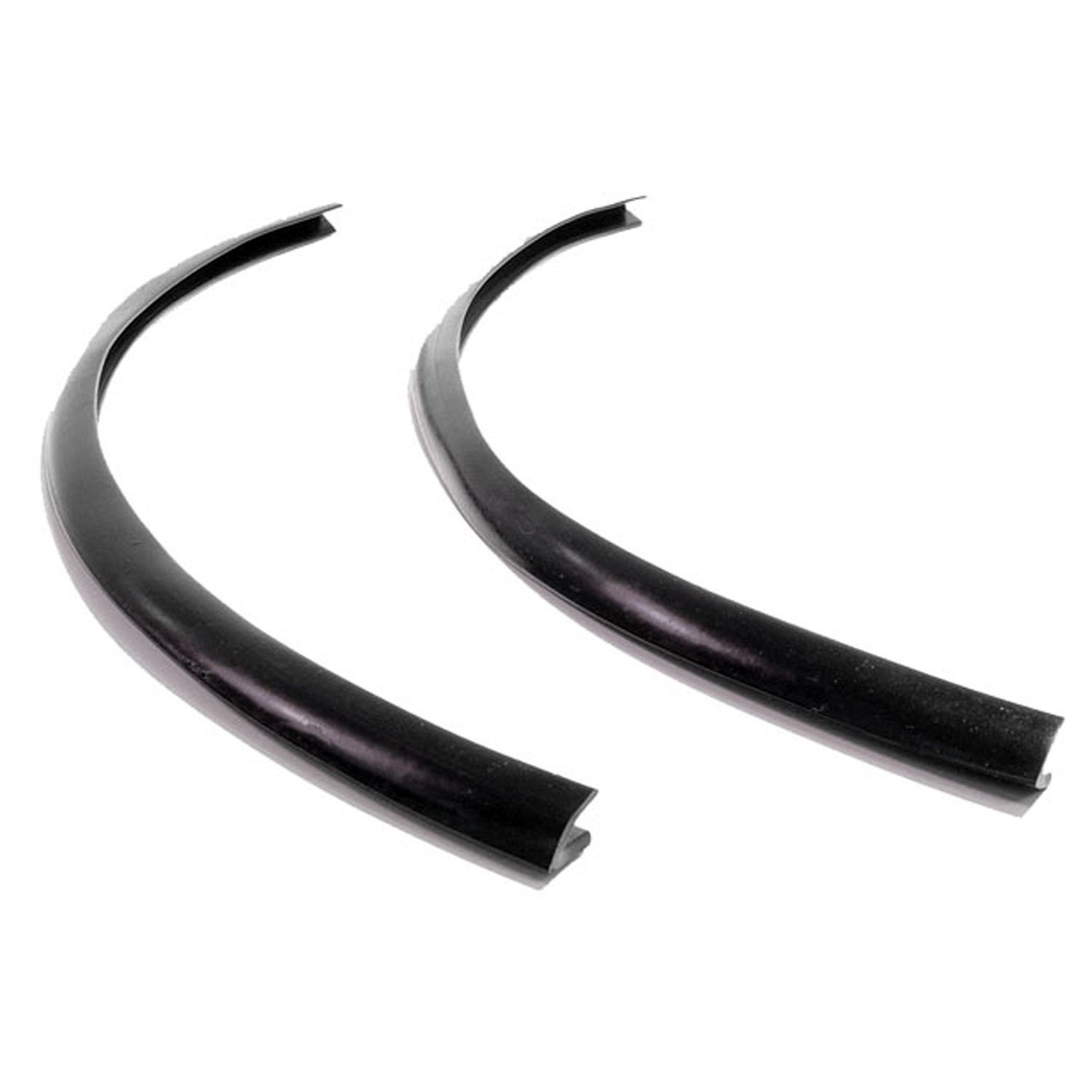 1961 Ford Falcon Vertical Seals for Vent Window. Each piece is 17" long-VS 6Vertical Seals for Vent Window. Each piece is 17" long. Pair
1961 Ford Falcon Vertical Seals for Vent Window. Each piece is 17" long-VS 6Vertical Seals for Vent Window. Each piece is 17" long. Pair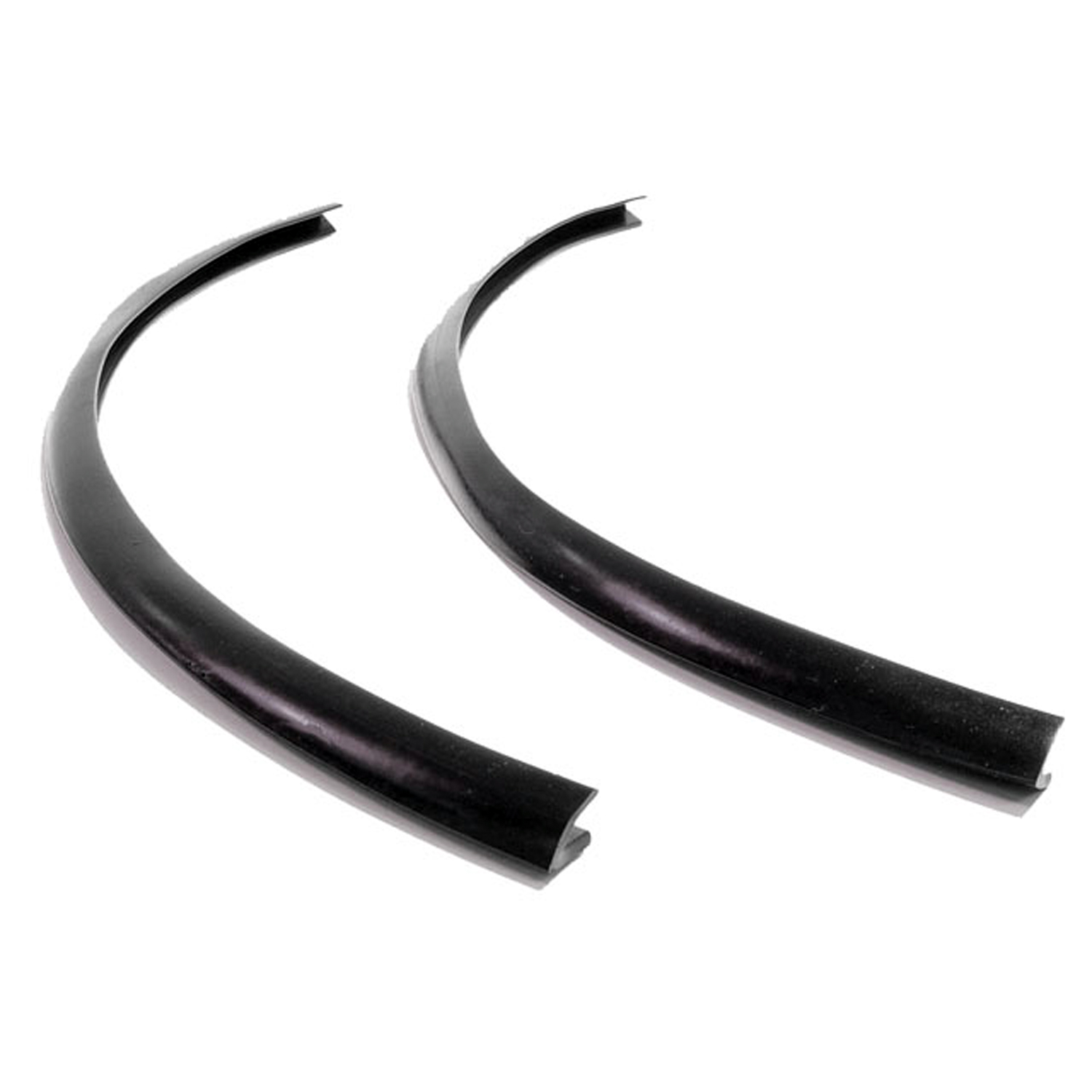 1961 Ford Falcon Vertical Seal for Vent Window. Sold by the foot.-VS 6/FTVertical Seal for Vent Window. Sold by the foot.
1961 Ford Falcon Vertical Seal for Vent Window. Sold by the foot.-VS 6/FTVertical Seal for Vent Window. Sold by the foot.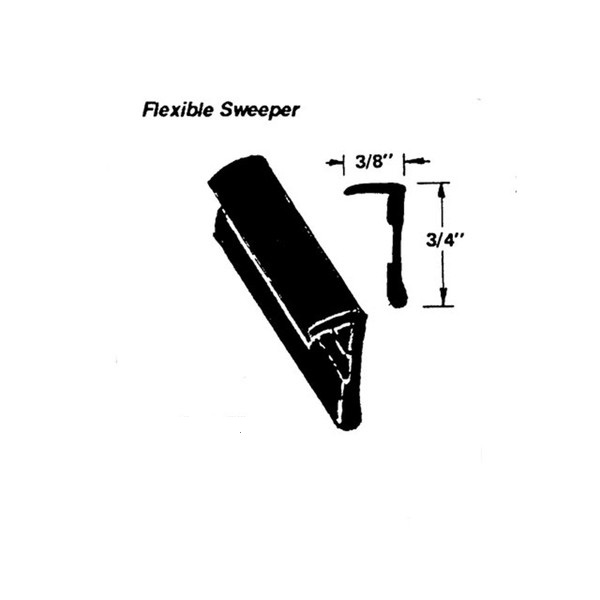 1961 Ford Falcon Flexible Sweeper. Made of rubber-WC 23-/FTFlexible Sweeper. Made of rubber. Seal for outside of side window. Sold by the foot
1961 Ford Falcon Flexible Sweeper. Made of rubber-WC 23-/FTFlexible Sweeper. Made of rubber. Seal for outside of side window. Sold by the foot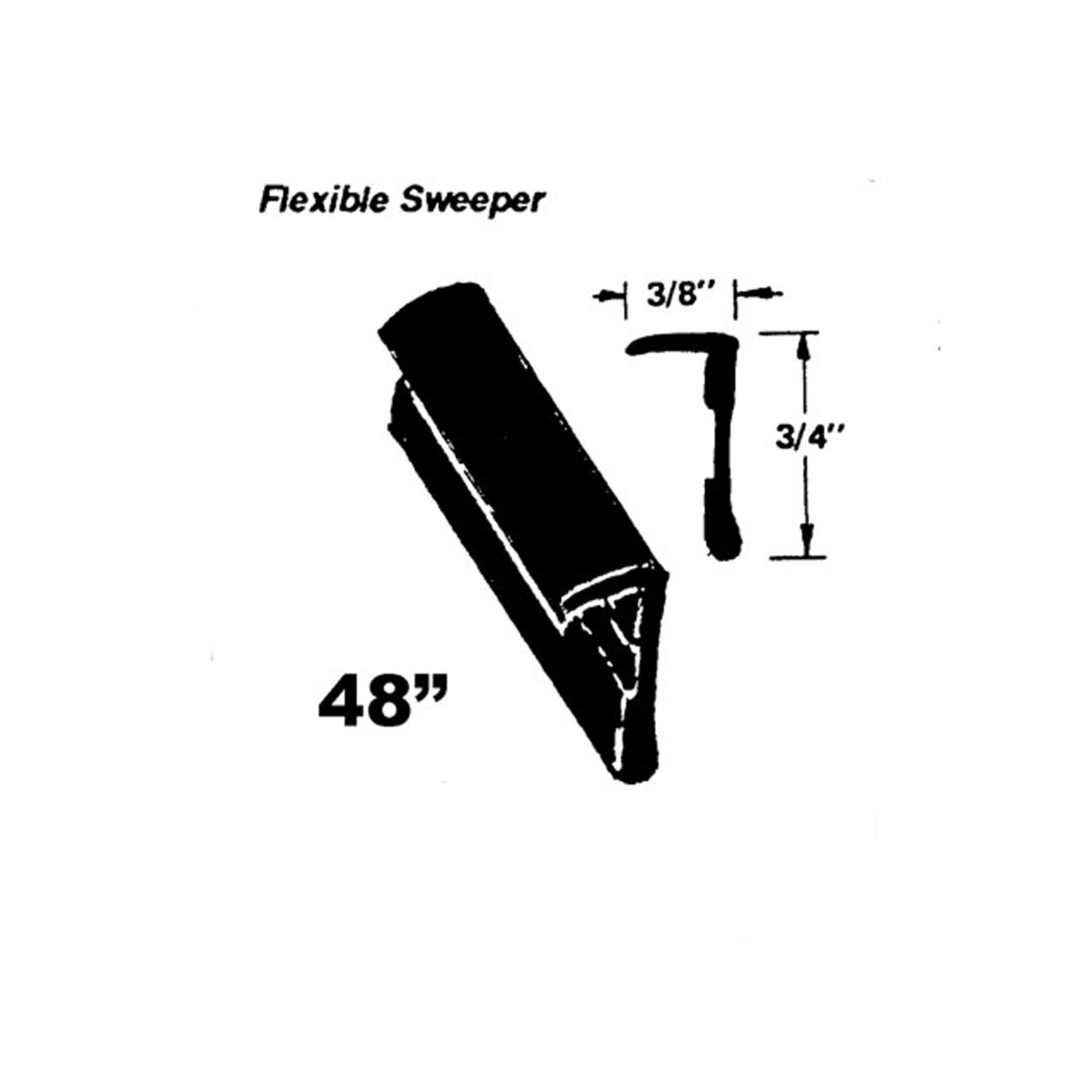 1961 Ford Falcon Flexible Sweeper. Made of rubber-WC 23-48Flexible Sweeper. Made of rubber. Seal for outside of side window. 48" Piece. Each
1961 Ford Falcon Flexible Sweeper. Made of rubber-WC 23-48Flexible Sweeper. Made of rubber. Seal for outside of side window. 48" Piece. Each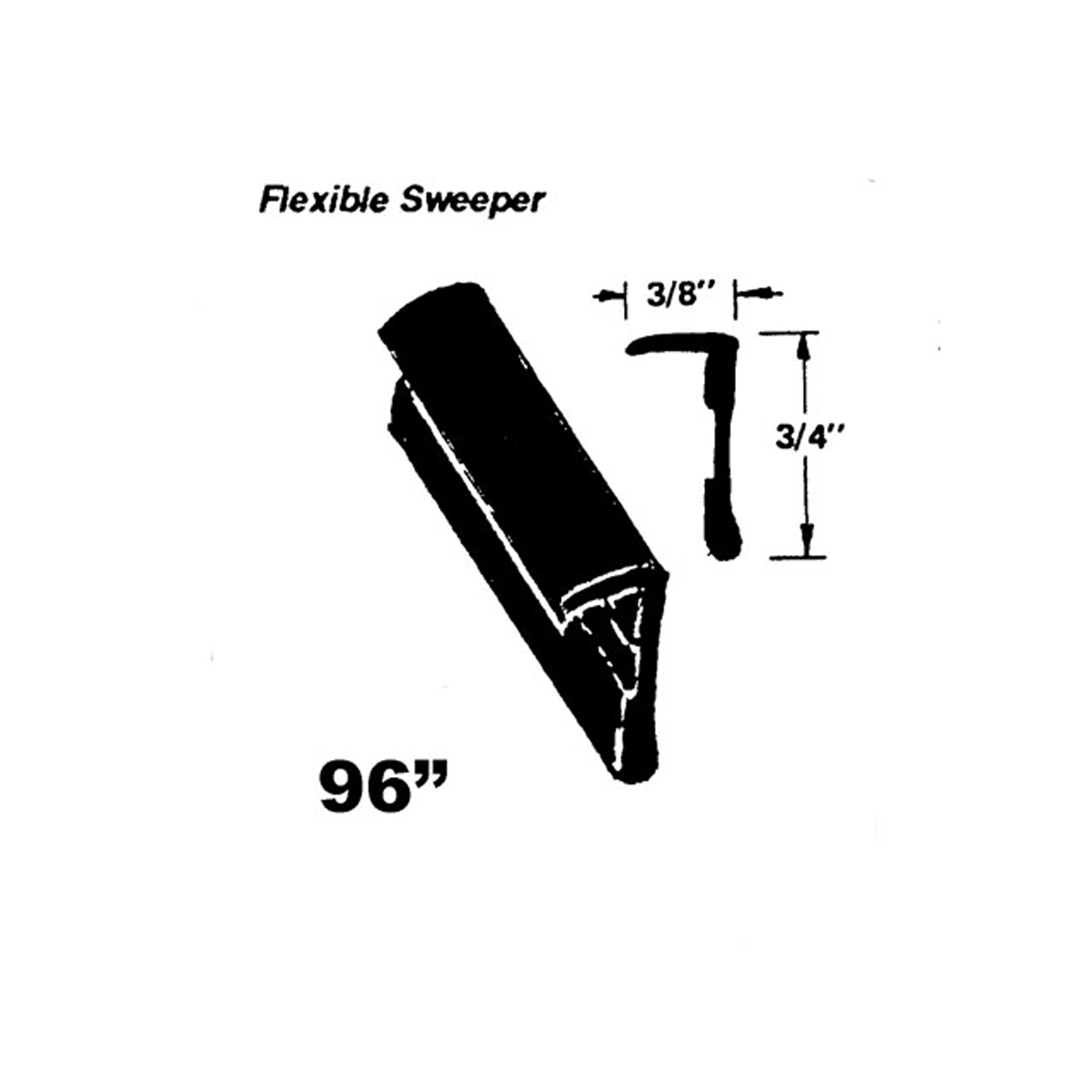 1961 Ford Falcon Flexible Sweeper. Made of rubber-WC 23-96Flexible Sweeper. Made of rubber. Seal for outside of side window. 96" Piece. each
1961 Ford Falcon Flexible Sweeper. Made of rubber-WC 23-96Flexible Sweeper. Made of rubber. Seal for outside of side window. 96" Piece. each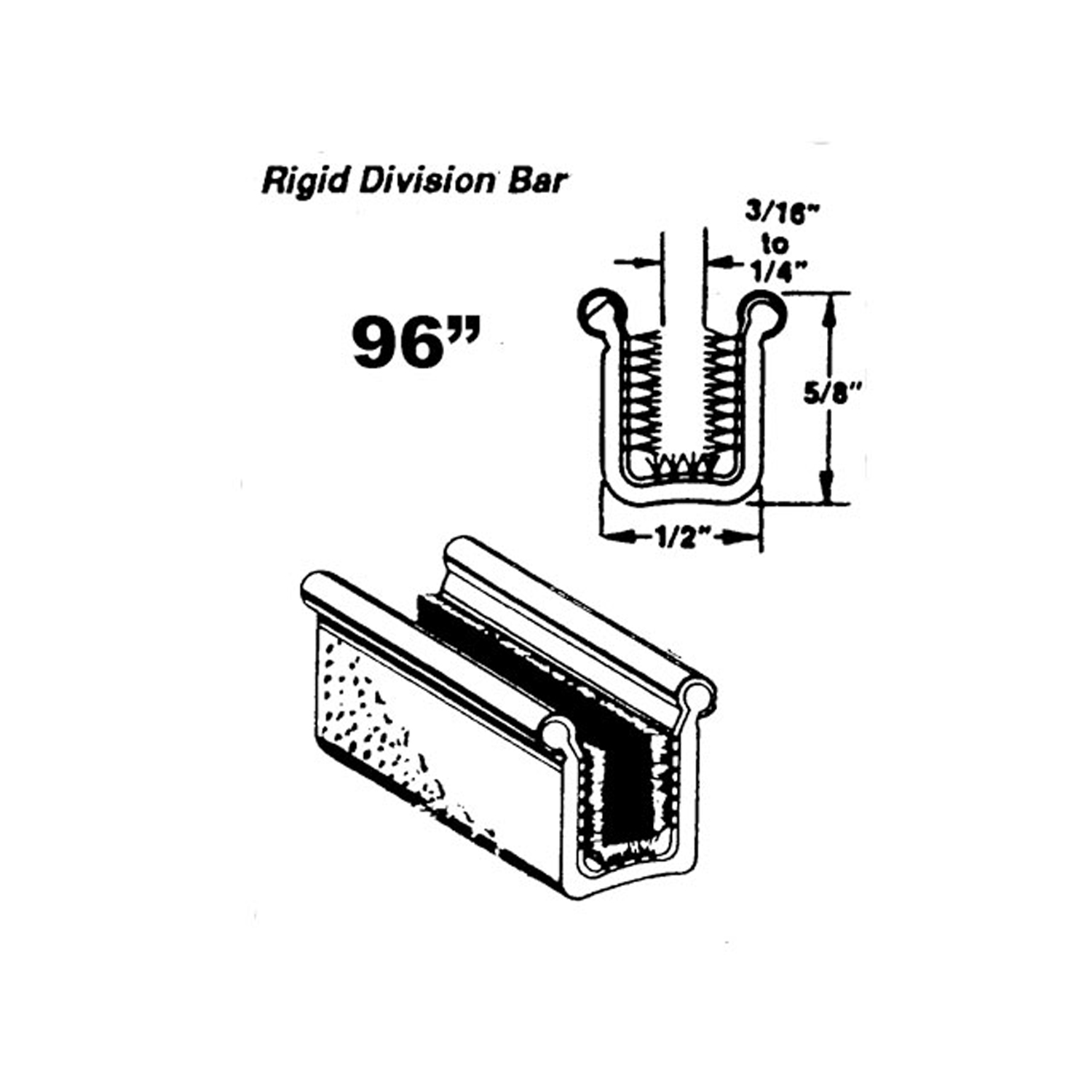 1961 Ford Falcon Rigid division-bar channel-WC 28-96Rigid division-bar channel. Made with stainless steel bead, heavy steel core and pile lining. 96 in. long. Each. NOTE: $20 special shipping charge applies for domestic orders. Call or email for overseas shipping costs. Part can be sectioned in two or three equal lengths to reduce overseas shipping costs.
1961 Ford Falcon Rigid division-bar channel-WC 28-96Rigid division-bar channel. Made with stainless steel bead, heavy steel core and pile lining. 96 in. long. Each. NOTE: $20 special shipping charge applies for domestic orders. Call or email for overseas shipping costs. Part can be sectioned in two or three equal lengths to reduce overseas shipping costs.Why Choose Metro?
For over 100 years, Metro Moulded Parts has been the pinnacle of quality in classic car restoration parts. Our commitment to precision and authenticity in every component ensures a perfect fit and an OEM-level appearance.
- Expert Craftsmanship & Quality: Each part is a testament to our dedication to reliability and perfection, crafted from original designs and thoroughly tested.
- Advanced Technology: We use cutting-edge techniques to create flawless, long-lasting parts that surpass others in performance.
- SuperSoft Sponge – The Ultimate Door Seal: Not only are our door seals 30% softer than competitors', but they're also guaranteed to never leak. They effectively reduce wind and road noise, enhancing your classic car's comfort and driving experience.
- Proudly American: Our parts are a product of American craftsmanship, made in the USA with a spirit of excellence and heritage.
- Unrivaled Warranty: We back our products with a 30-year industry-leading warranty, a testament to our confidence in their quality.
Join us in preserving the legacy of classic cars with parts that are crafted for perfection, not just made.

